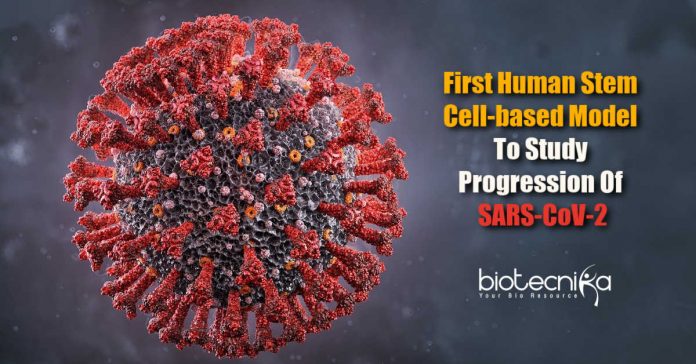First human stem cell-based model to study the progression of SARS-CoV-2 and other viruses
Regardless of all initiatives, scientists have actually not yet had the ability to comprehend SARS-CoV-2 entirely. COVID-19 has affected virtually the entire globe, causing more than a million fatalities. However, it is not just a novel coronavirus; however, most viral infections do not have a vaccine or therapy to date. Researchers do not know everything about exactly how some viruses function.
Prof Guiscard Seebohm from the Institute for the Genetics of Heart Diseases of Münster University and his team established a viral expression design that has the ability to aid in evaluating the mode of action of different viruses to study viral infections more specifically.
The outcomes of the research are released in the journal Scientific Reports.
Similarities between Coxsackievirus and SARS-CoV-2
Coxsackieviruses are RNA viruses that live inside the digestive tract and cause HFMD (hand, foot, and mouth diseases). Nevertheless, they can likewise affect the eyes, muscular tissues, throat, lungs, and heart.
CVB3 (Coxsackievirus B3) – a subtype of coxsackievirus B, though not as prominent as SARS-CoV-2, is transmitted similarly as the SARS-CoV-2.
The symptoms and recuperation time of CVB3, though, resemble the flu. Usually
, the virus does not bring about any long-lasting problems.However, scientists recommend that any viral disease can result in persistent infection and gradually damage the internal organs. It has been seen that few people with Coxsackievirus B3 develop inflammation of the heart muscle or type 1 diabetes after months or years after the intense infection.
Together with this, the viral genome has been discovered in the affected cells. Nonetheless, not many studies have been done until now to comprehend the reason behind chronic infection and exactly how an acute CVB3 infection proceeds.
First human stem cell-based viral model
According to recent studies, researchers have established the initial versatile human iPSC-based model, which can help analyze the viral loads.
To understand the mechanism of a disease on a cellular level, human-iPSC-based models are utilized in labs. This model assists in evaluating possible vaccines or medications and also can help in establishing their adverse effects.
The model evaluated the effect of Coxsackievirus B3 on heart muscle cells that originated from the stem cells. Human stem cells have the capability to transform into any type of human tissue the lab, therefore permitting researchers to examine the mechanism of the virus on various body cells.
The goal of the model is to regulate the activity of the virus on the heart cells. During the research, the researchers could find a stable combination of a non-infectious variant of the Coxsackievirus B3 virus inside human stem cells’ genetic material.
The difference in this viral model
The scientists might control this model fully, unlike other systems. They had the ability to regulate the expression of Coxsackievirus B3, time-wise, in both heart muscle cells and stem cells, minimize or enhance the number of viral proteins and transform the localization of these proteins.
The scientists could alter the pattern, extent, and the time of development of the viral infection, enabling them to research each virus’s facet.
Outcomes
Researchers would certainly have the ability to simulate different diseases and their progression using this model’s development. This will enable researchers to analyze these viral diseases with absolute accuracy, therefore helping develop vaccines or medication.
Author: Sruthi S






























